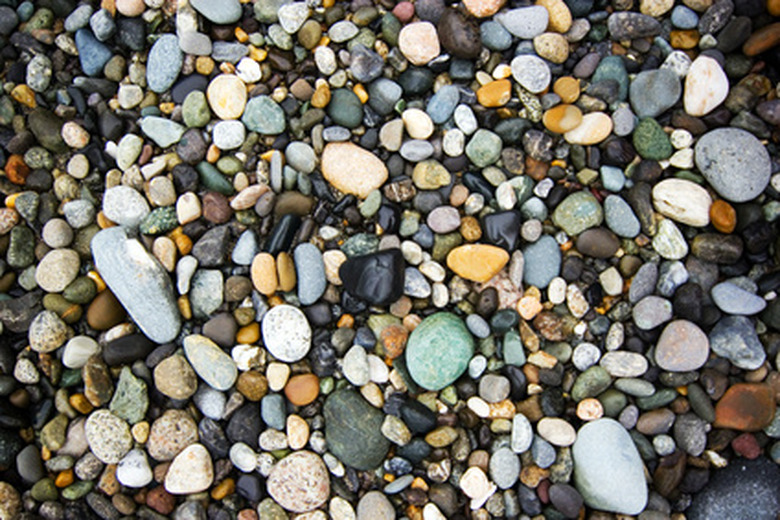How To Tell The Difference Between Talc & Gypsum
Rocks and minerals all have different characteristics, including hardness and luster. The Mohs Hardness Scale is the primary scale that tests a rock's hardness by how easily it can be scratched. Diamond has a score of 10 on the hardness scale, which is the highest a mineral can obtain. Talc has a score of 1, and gypsum has a score of 2, which makes these two minerals similar and difficult to differentiate between.
Step 1
Feel both pieces of rock for how slippery they are. If the rock is slippery, it may be talc. If the rock isn't slippery it may be gypsum.
Step 2
Fragment pieces of each rock with your fingernail. If cleavage fragments fall off and are tiny, the specimen is talc. Cleavage on talc is perfect. Cleavage is the quality of a split along defined planes of a rock or mineral. In this case, you would be splitting the rock with your fingernail.
Step 3
Scratch each piece of rock. If powder falls off and doesn't feel slippery or greasy, it's gypsum.
Step 4
Check the colors of each. Talc will have a gray, white, green or silver color to it. It can also have a dull, pearly or greasy luster. Gypsum can be colorless, white and gray with yellow, red and brown shades to it. Gypsum can also have a pearly luster to it.
Cite This Article
MLA
Martinez, Christina. "How To Tell The Difference Between Talc & Gypsum" sciencing.com, https://www.sciencing.com/tell-difference-between-talc-gypsum-7229991/. 24 April 2017.
APA
Martinez, Christina. (2017, April 24). How To Tell The Difference Between Talc & Gypsum. sciencing.com. Retrieved from https://www.sciencing.com/tell-difference-between-talc-gypsum-7229991/
Chicago
Martinez, Christina. How To Tell The Difference Between Talc & Gypsum last modified March 24, 2022. https://www.sciencing.com/tell-difference-between-talc-gypsum-7229991/
